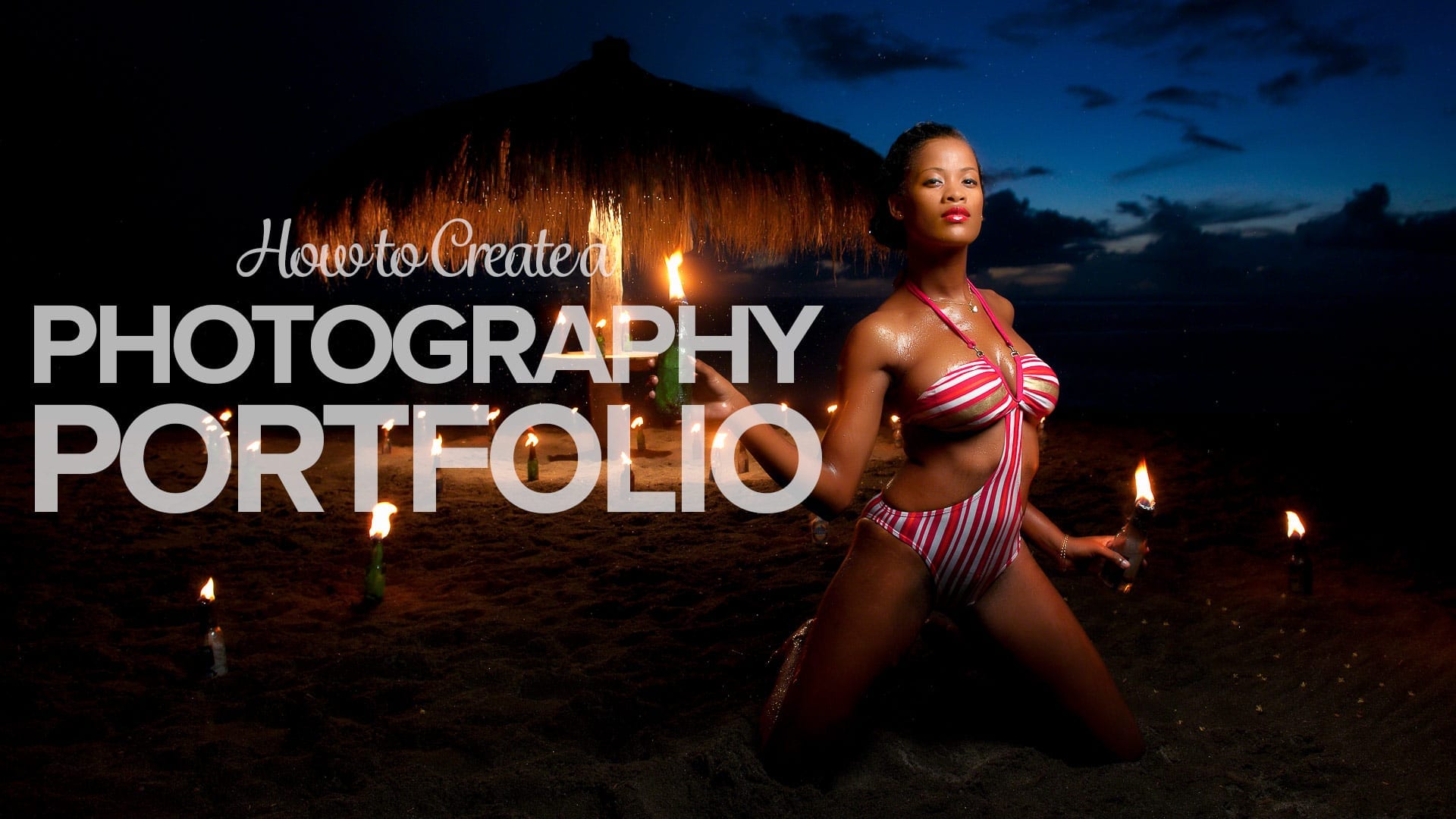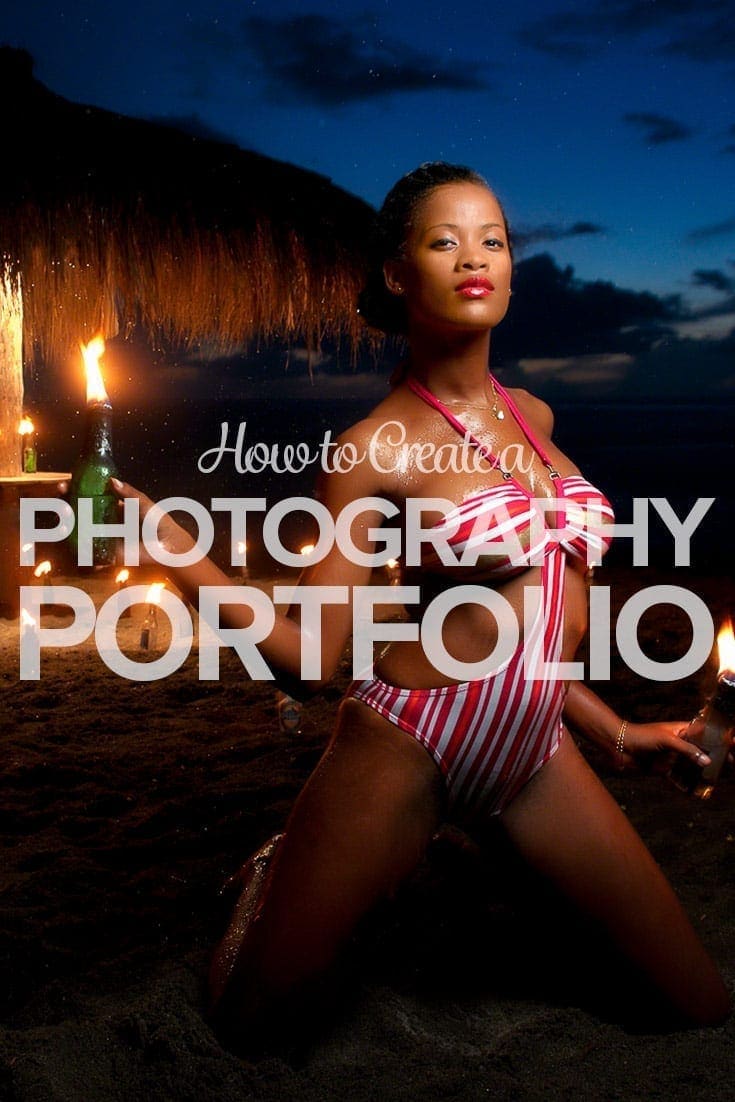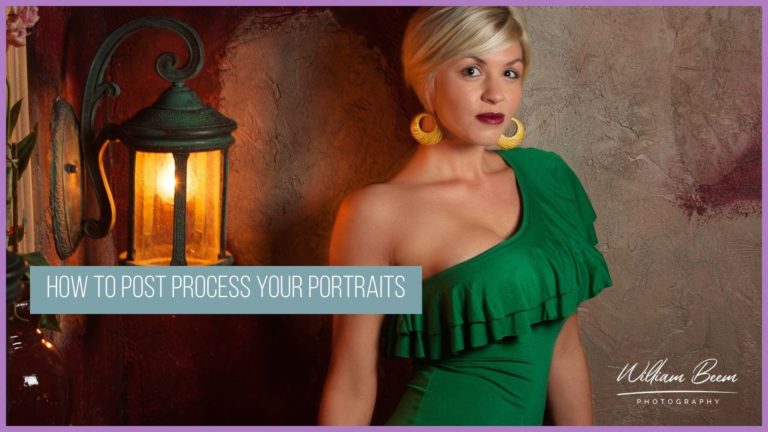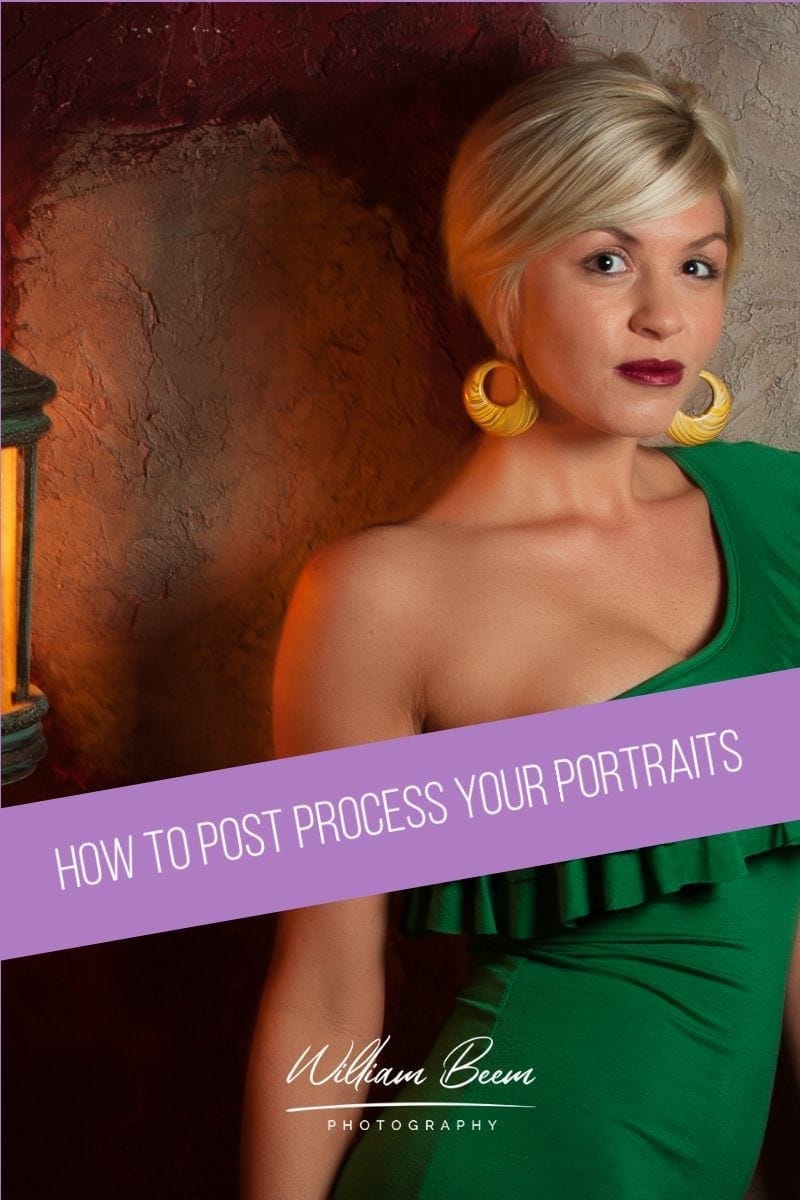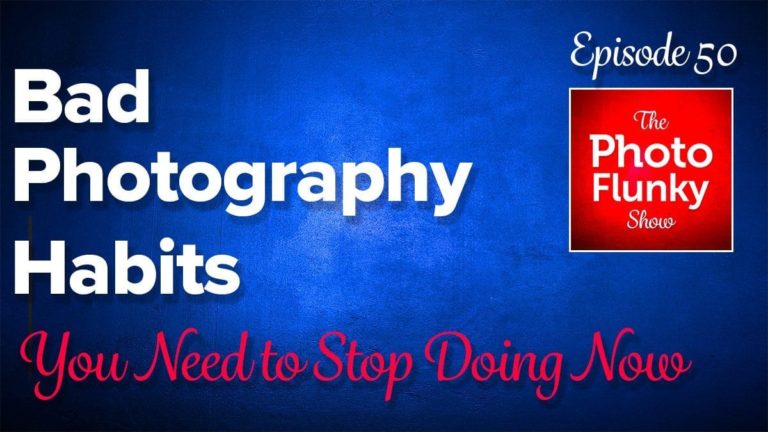Affiliate Disclosure: We earn a commission if you purchase through one of our links at no additional cost to you.
Creating a photography portfolio is pretty much like creating a visual resume. It’s something you do primarily to get a job. Not just any job, though. Your photography portfolio is all about getting the job you want to do.
I see a lot of online portfolios with a broad range of genres. It really doesn’t tell me why a photographer is good at any one thing. Of course, not every photographer wants to get work based upon their portfolio.
So what do they really want to come out showing their portfolio?
What is a Photography Portfolio?
The dictionary definition of the word portfolio covers various things, from investments to creative works. However, the common thread among most of the definitions is about work. Getting work or making money.
Here’s the one that interests us:
A set of pieces of creative work collected by someone to display their skills, especially to a potential employer.
So we can assume that someone who creates a photography portfolio wants to show their skill. That’s a good thing, whether you want to get work out of it or not.
Displaying your skill doesn’t necessarily mean you’re only a portrait photographer or a food photographer. However, honing in a niche genre is more likely to help you get work.
There are two potential paths here.
For the enthusiast, you want to show your skill. What skill are you demonstrating, though? Did you take a pretty photo or mastered a skill in photography – lighting, composition, or story?
The professional seeking work, who are you trying to impress with your skill? This is your market with potential clients. Do you show your skills in the same portfolio, or do you create separate portfolios showing your skill in related but different markets?
Who Needs a Portfolio?
Not every photographer needs a portfolio.
If you’re an enthusiast and happy with what you’re doing, you don’t need a portfolio. If you’re a professional with so much potential work that you don’t need to do any marketing, you may not need a portfolio.
For the rest of us, a portfolio is a good idea.
1: A Portfolio Establishes Your Place in the Market or Field
People like to pigeonhole or categorize other people. He’s a guitarist. She’s a chef. You’re a portrait photographer. Labels are how we organize our thoughts and make decisions.
That doesn’t mean you can’t earn more than one label, though.
I think of Moose Peterson as someone who markets his skills very well in different genres. He’s known for wildlife photography, aviation photography, landscape photography and he also educates other photographers.
If he wants to earn some aviation business, he doesn’t show the potential client a photo of a critter.
You can do more than one thing with your photography, but the trick is to show the right photography portfolio to the right audience or market.
Maybe you do weddings, engagements, newborn and senior portraits. That’s great. Work up different portfolios. If you do this right, you may have clients who hire you from their engagement all the way through to their kid’s senior portraits. Just show them the right pieces at the right time.
2: A Portfolio Demonstrates Specific Skills
What if you did something better than anyone else in the world?
Imagine you were the best in the world at black & white conversion. How would you show it in your photography portfolio? Maybe you specialize in abstract art, lighting, color or top-down compositions.
One of the best ways to become the best in the world at something is to practice. Create challenges in your chosen field. Then share those in your portfolio until you do something that beats your past work.
Whether you are an enthusiast or someone working to gain clients in a particular field, this is a great way to achieve your goals.
Part of it is your mindset. You don’t show the work because you’ve already done it. You show work like you want to do. Reach beyond what you think you can do. Push your boundaries.
Robert Downey, Jr. had a great reply to an interviewer when asked about auditioning for Iron Man. He mentioned that he studied Tony Stark and put himself in the mind of that character. He imagined himself rolling into the studio with a convoy of limousines because that’s what Tony would do.
Some people may call this “fake it until you make it”, but I call it vision. See the role you want to occupy and then put it in your portfolio.
How to Build a Portfolio
Start with the end in mind.
In other words, create the vision for your portfolio. Shoot the work that should go in your portfolio. That doesn’t mean you won’t take other photographs along the way. However, it does do something for you.
It means that your photography portfolio is intentional and purpose-built. Not just a random collection of things you happened to do. Building your portfolio means that you have a vision of what you need to demonstrate or communicate to your audience or potential clients.
Here are a couple of things to consider when building your portfolio.
1: Make Sure Each Photo is Completely Yours
There are some photos I’ve taken and love, but I would never put them in my portfolio. One example is the cover photo for this article.
I took that photo at a Joe McNally workshop in St. Lucia to learn advanced flash techniques. Wonderful workshop and I learned a lot there, and I’ve put those lessons to use in other photos.
So why isn’t this photo worthy of my portfolio?
Many other students also have similar shots to this one. Some were at my class, some were at other classes he’s taught at different times.
This isn’t my photo because I didn’t create the vision and do the production work. If you have photos from a workshop that other people setup for you, don’t include those in your portfolio.
Instead, take the lessons from the workshop and create your own productions using the lessons you learned. Those are your photos and your work.
2: Select Photos That Work Together
You need to create a portfolio for your audience or potential clients. Don’t add something that doesn’t interest them or demonstrate your proficiency with specific techniques.
You’re just wasting everyone’s time if your portfolio has a couple portraits, some sports photos, a few landscape photos and a picture of the big fish you caught on your last vacation.
It’s OK to have more than one interest with your photography. Just be sure to give each theme its own portfolio.
Put yourself on the other side. What do you want to see if you’re reviewing a photography portfolio, mainly to hire a photographer?
The bride and groom looking for a wedding photographer won’t care about your big fish.
3: Limit the Number of Photos in Your Portfolio
Remember that this represents your abilities, not a place to put every photo you’ve ever taken. Give people enough to see your best quality work and then stop.
Don’t keep adding photos until lesser quality work starts showing up. My rule is to show somewhere between 12-20 photos, and 20 is pushing it.
That’s enough to show that you didn’t get a lucky shot. You can do it over and over again. However, that’s where you stop. You don’t need or want to overwhelm your audience. give them a taste of your abilities, leave them wanting more.
4: Online or Physical Portfolio?
There are plenty of people online who want to look at your best work. Unfortunately, online images don’t have the same impact as holding an album or print in your hand.
If you’re in business, I recommend having a few hard copies of your portfolio that you can ship to potential clients. Put yourself out there as a luxury service so you can charge luxury rates.
The guys online who are lowballing for event photography jobs and driving for Uber on the weekends will never do something like this. Instead, they’re racing to the bottom and undercutting prices of others in their market.
There are fewer competitors at the top of the field. Why wouldn’t you want to compete with higher rates and lower competition in the world?
If your work holds up and you can provide the customer service required, go for the print album and snag those clients who demand the best.
Not every photographer wants to create and maintain a WordPress site, though. Some services will help you host your site and do the technical work, and you just concentrate on adding your own words and photos.
Pixpa is a photography portfolio service that can help you out. I’m not an affiliate, but I wanted to share their article that showcases some portfolios on their service:
29 Outstanding Photography Portfolio Websites to Inspire You
5: Tell a Story
I often say that every photo should evoke an emotion. Well, shouldn’t your portfolio use those emotions to tell a story?
Like any good story, your portfolio should have a beginning, a middle and an end.
Start strong to get attention. Have some emotional changes in the middle. Finish strong, but perhaps with a different message than your opening photo.
Most stories set up some initial conflict and then unfold events until it ratchets up the conflict. However, the ending is never the resolution of the conflict. There’s a denouement to wrap up the story and let everyone know how things worked out.
It closes the story, wraps up the plot lines, and leaves a final emotion for the audience. Take your audience on a journey through your photos and the story they tell together.
6: Show Your Personal Style
Add something of “you” in your portfolio. Your photos should work together in many ways.
When someone looks at your photo, you want them to think of you. That’s because your audience wants more than a documentary. They want a unique and creative look that comes from “your” photography, not just any photo.
If your photos are generic and bland, work on creating your style before you create a portfolio. It’s OK if this takes some time. You need to explore who you are as a photographer before trying to tell that message to someone else in your portfolio.
7: Add an Artists Statement
I know your photos should speak for themselves. They do.
However, the objective of a portfolio is to persuade. A statement about your photography, what it means to you, what inspires your direction are all useful pieces of information to help a potential client know if you’re the right photographer for their needs.
Maybe you aren’t.
I’m not all things to all people. I couldn’t serve everyone if I were, so I’m happy to lose a few people here and there if I can create a more engaged audience by narrowing my message.
8: Add Your Contact Information
Imagine if your photography portfolio really swayed someone who wants to hire you and they couldn’t find out how to contact you!
That’s happened to me. Sometimes people found my photos online and had no idea how to reach me. I’m not proud of that, but it’s something I’m working to correct. If you have the potential to sell either a photograph or a photography service, make sure they know how to contact you.
Take Your Time Creating Your Photography Portfolio
My photography portfolio isn’t online. I redesigned my site with some new software, and that presented me with a dilemma.
I liked the way my old site presented my portfolio. It was grand and easy to navigate.
Replicating that experience with the software I use now is a bit problematic. There’s also another concern.
It’s time I updated my photos to be more representative of the work that I want to do. My vision for these photos has higher production values, higher costs, and some problems to solve that I never had to address before.
That’s the price of upping your game, though. Now excuse me while I try to find someone with an elephant and an owl for my next photo session.
Subscribe to I Like Your Picture
Thank you for listening to I Like Your Picture. Make sure you get every episode by subscribing. You can find more subscription options on the player above. Just clicks the three dots inside the circle on the right side of the player and look in the Subscribe option.



